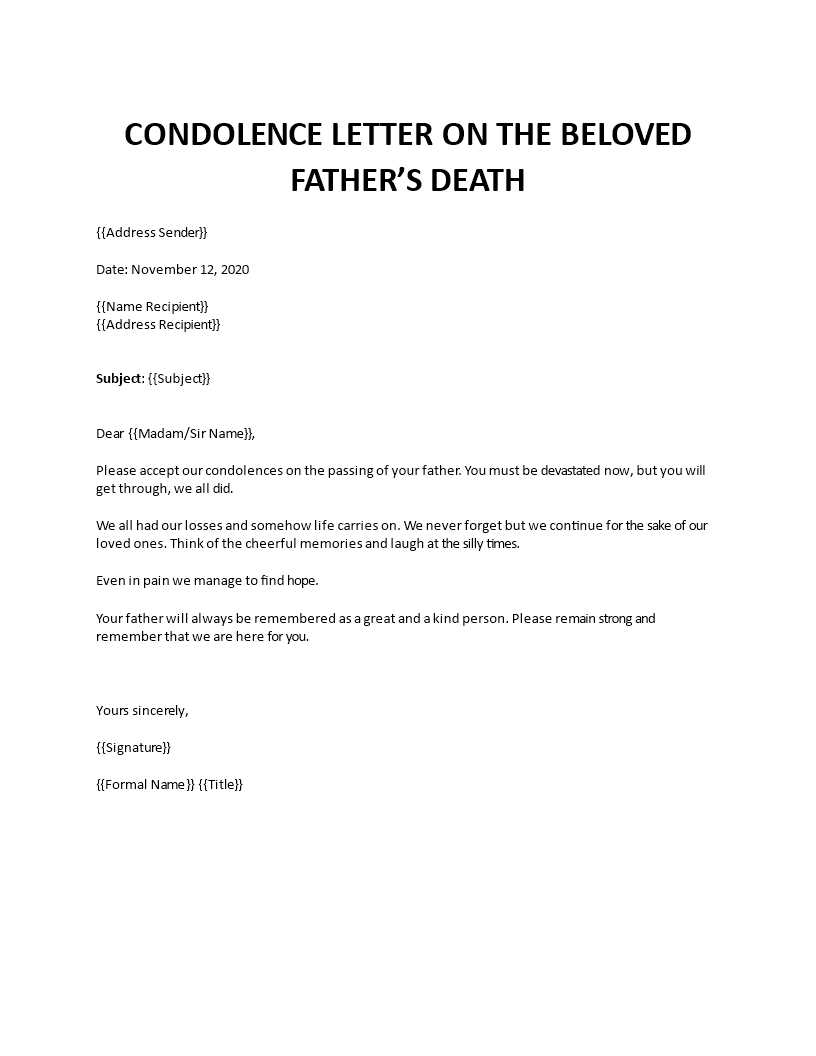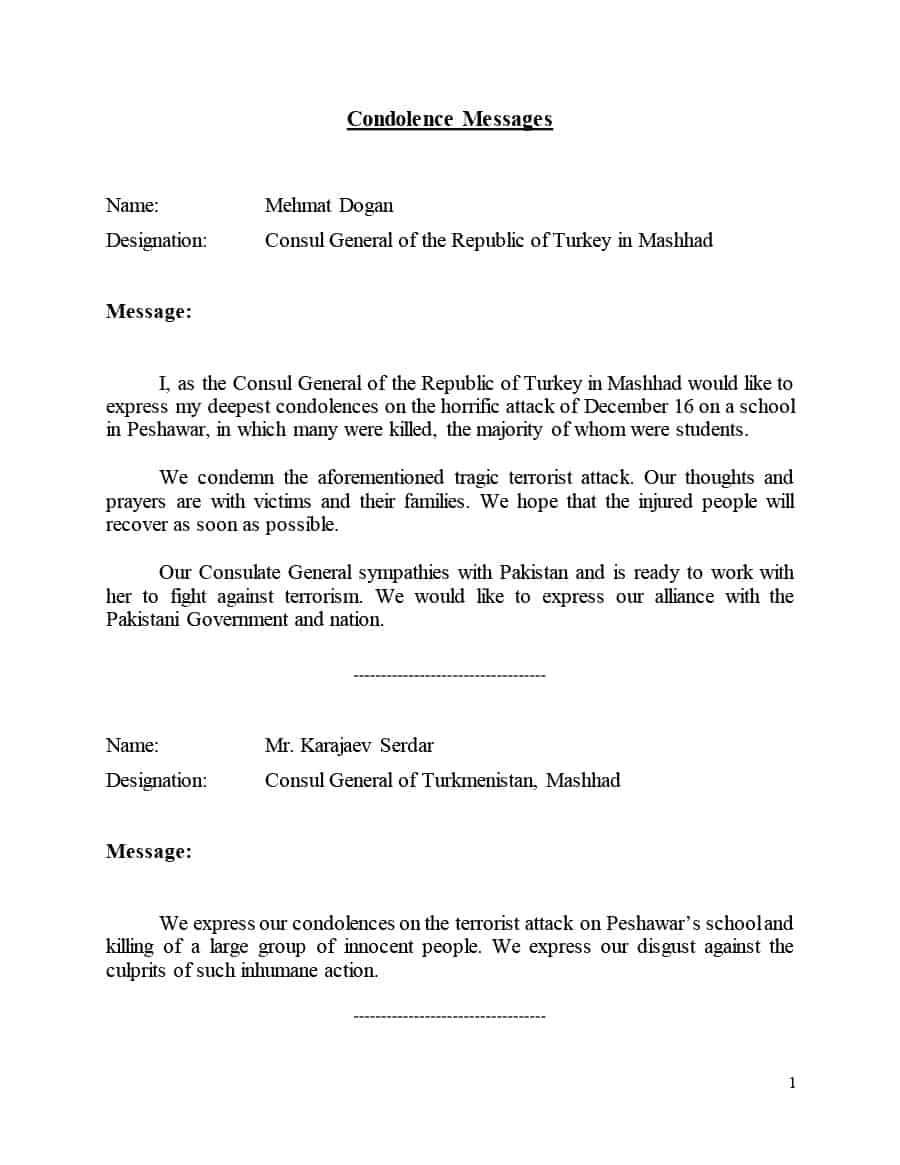Condolences Letter Template for Sympathy

When someone experiences a loss, a heartfelt written message can provide comfort during such a challenging time. Crafting a sincere note that conveys empathy, understanding, and support can offer solace. This guide explores how to structure such a message in a thoughtful and meaningful way.
Crafting a Supportive Message

Begin by acknowledging the person’s grief and expressing genuine sorrow. Keep the tone sincere and respectful, avoiding overly elaborate language. Your goal is to offer a simple yet heartfelt message of compassion.
What to Include

- Personal Acknowledgment: Acknowledge the situation and convey your understanding of the individual’s sorrow.
- Offer Support: Provide a simple statement of support, showing your willingness to assist or be there during this difficult time.
- Memory or Comfort: Sharing a warm memory or a comforting thought can bring a sense of peace to the grieving person.
- Closing Words: End with kind and encouraging words that leave the individual feeling cared for and not alone.
Example of a Thoughtful Message

Here’s an example of how you can structure such a message:
- Dear [Name],
- I was deeply saddened to hear about your loss. Please know that my thoughts are with you during this difficult time.
- If there is anything I can do to help or any way I can offer support, don’t hesitate to reach out. I’m here for you.
- I’ll always remember [Name of the deceased] for [personal memory or trait], and I hope that brings you some comfort as you navigate through this time.
- With heartfelt sympathy,
- [Your Name]
By structuring your words with care and thoughtfulness, your message can serve as a source of emotional support for someone in need of comfort.
Guide to Writing a Thoughtful Sympathy Message

During times of loss, a carefully crafted message can provide immense comfort. The act of offering support through words requires sensitivity and empathy. Understanding the proper way to express your sentiments can help ease someone’s grief and show them they are not alone.
When crafting such a message, it is important to think carefully about what to say. The words should reflect genuine sympathy and offer reassurance without being overly formal. It’s about finding the right balance between compassion and respect.
Choosing the Right Words for Comfort
Selecting words that convey empathy is essential. Avoid clichés or phrases that may sound insincere. Instead, opt for simple yet meaningful expressions of care. Statements like “I am deeply sorry for your loss” or “My thoughts are with you during this difficult time” can offer comfort without overwhelming the person who is grieving.
Personalizing Your Message
Adding a personal touch makes the message more heartfelt. Mentioning shared memories or acknowledging the qualities of the deceased can provide a sense of solace. For example, recalling a kind gesture or admirable trait can highlight the positive impact the person had on those around them.
Common Mistakes to Avoid
- Avoid offering unsolicited advice or trying to “fix” the situation. Grieving individuals need support, not solutions.
- Don’t rush through the message. Take your time to express your thoughts genuinely.
- Refrain from using overly religious language unless you know it will be comforting to the recipient.
Etiquette and Helpful Advice
Respect the grieving person’s space and timing. Some may not be ready to respond immediately, and that’s okay. Keep your tone gentle and kind, and remember that your message should be an offering of support, not an expectation of a response.
Examples for Inspiration
Here is an example of a message you can adapt for your own use:
Dear [Name],
I was so sorry to hear about your loss. [Name of deceased] will always be remembered for [personal quality or memory]. Please know that I am here for you during this challenging time, and I’m just a call away if you need anything.
With deepest sympathy,
[Your Name]